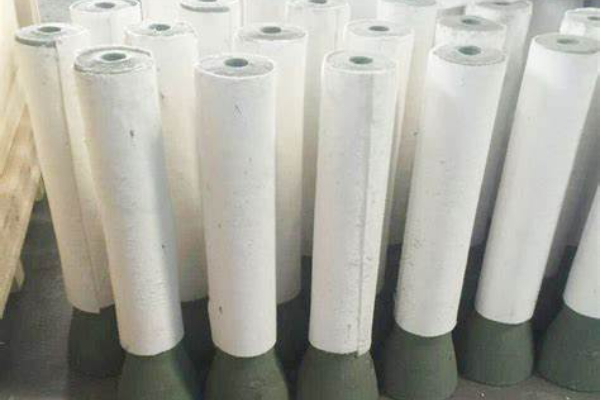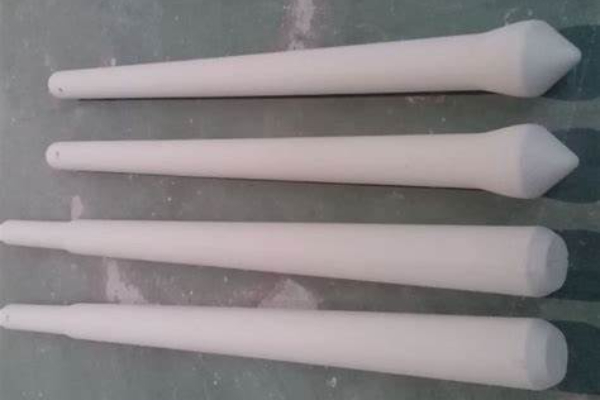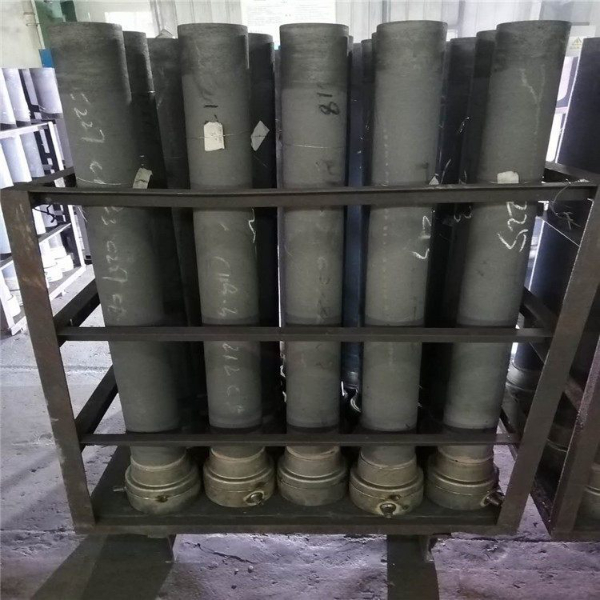Tipos de materias primas refractarias para colada continua de materiales funcionales
Los materiales refractarios funcionales para colada continua se refieren a la varilla de tapón integral., (cucharón) boquilla larga, y boquilla sumergida, Las tres partes principales de la colada continua.. Algunas personas también incluyen la placa deslizante del cucharón., la placa deslizante de la artesa, y la boquilla de la artesa, que están todos incluidos. Los materiales refractarios de carbono se conocen comúnmente como materiales refractarios unidos por carbono. La estructura de control de flujo de placa deslizante de tundish se ha vuelto cada vez más rara y tiende a ser reemplazada por varillas.
Tipos de materias primas refractarias para la fundición continua de materiales funcionales y requisitos de rendimiento del material
La fundición continua requiere que sus materiales refractarios funcionales tengan una buena resistencia al choque térmico, Resistencia a la erosión sintética de escoria, Resistencia a la erosión de acero líquido, y fuerza de alta temperatura apropiada. Estos requisitos característicos varían según el uso de piezas., tipos de acero, y condiciones de fundición de las tres partes principales.
Boquilla sumergida
(1) Excelente resistencia al choque térmico. La boquilla generalmente se precaliente a 1100 ° C antes de usar, Pero la temperatura del acero fundido durante la fundición continua es tan alta como 1500 ° C. La boquilla necesita soportar una diferencia de temperatura de choque térmico de 400 ° C dentro de 1 segundo.
(2) Tiene buena resistencia a la erosión de la escoria de moho. El material de carbono de circonio utilizado en la línea de escoria ha mejorado la resistencia a la corrosión de la escoria debido a la introducción de ZRO2. Sin embargo, El material de carbono de circonio tiene un riesgo de explosión de choque térmico debido a su bajo contenido de carbono y al cambio de fase de ZRO2. Por lo tanto, se requiere no enfriarse demasiado después de precalentar. rápido. Al mismo tiempo, Si el material de carbono de circonio está en contacto directo con el acero fundido en el agujero interno, su contenido de grafito y su fuerza de unión son bajas, y se derretirá rápidamente bajo la erosión del flujo de acero de alta velocidad. Por lo tanto, debe usarse junto con el material de carbono de aluminio principal o el material de revestimiento.
(3) Tiene buena resistencia a la erosión del acero fundido, especialmente el agujero interno, que debe ser resistente tanto a la erosión de acero fundido como a la erosión química. La parte del cuerpo inmersa en el cristalizador rara vez está corroída, Cuál es la razón principal para elegir la boquilla de aluminio, inmerso en carbono.
(4) Buenas propiedades antiplegging. La sedimentación y la obstrucción de la boquilla es un problema más grave y común que la erosión del agujero interno, especialmente para el vertido de acero matado por aluminio. Actualmente, Cambiar el material y el patrón de flujo es una ruta técnica ideal para resolver el problema de obstrucción.
(5) Los requisitos de resistencia a la temperatura a alta temperatura son particularmente importantes y son más altos que los de las boquillas y las barras largas. El acero fundido no puede caer al fondo cuando golpea, y no puede romperse cuando el acero fundido se balancea. Teóricamente, Se requiere la resistencia a la flexión de alta temperatura a 1200 ℃ para alcanzar 2.5MPA. En la producción real, La resistencia a la flexión de temperatura normal después de la quema se controla para no ser inferior a 6MPa.
Tapón integral
(1) Buena resistencia al choque térmico, pero no tan exigente como la boquilla inmersa y la boquilla larga, Porque la varilla del tapón solo se sumerge en el acero fundido desde el exterior en lugar del agujero interno, y la transferencia de calor es desde el exterior al interior; además, La barra del tapón a menudo está empaquetada con la tundish al mismo tiempo, El precalentamiento también reduce sus requisitos de resistencia al choque térmico.
(2) La resistencia a la erosión de la escoria no es originalmente un problema para las varillas. Sin embargo, con la popularización y aplicación de agentes de altos alcalinos y el aumento continuo en el número de hornos de fundición continuos, Especialmente el lanzamiento continuo de palanquillas cuadradas y billets redondos requiere un lanzamiento continuo de 20 horas. Como se mencionó anteriormente, Se resalta la erosión de la línea de escoria de la barra del tapón por el agente de cobertura de tundish y la escoria. Los materiales generales de carbono de aluminio son difíciles de resistir. Muchos fabricantes han agravado los materiales de carbono de circonio, tales como materiales de carbono de circonio para líneas de escoria de boquilla inmersa y aluminio ordinario. Cada material de carbono es 50%(w) compuesto.
(3) Cuanto mayor sea la resistencia a la corrosión del acero fundido, Cuanto mejor, especialmente el material de la cabeza de la barra. Esto se debe a que el área de la cabeza de la barra está sujeta a erosión continua y erosión por acero fundido altamente turbulento. La erosión rápida conducirá a un mal control de flujo o un vertido final no controlado. Hoy en día, Materiales de carbono de aluminio de alta calidad o materiales compuestos de carbono de circonio (aplicable a la mayoría de los aceros de carbono) y materiales de carbono de magnesio (aplicable a todos los tipos de acero, Acero especialmente alto de oxígeno, acero alto en manganeso, acero tratado con calcio, y otros materiales de carbono de aluminio no son adecuados tipos de acero aplicables).
(4) No se requiere el índice de resistencia a alta temperatura porque la pared de la barra del tapón es relativamente gruesa y tiene suficiente resistencia. Por lo tanto, Casi todos los fabricantes aplastan, pantalla, y productos de desecho seco, materiales de desecho, Turning Materials, y materiales reciclados de recolección de polvo en el proceso de producción. Asar (o quemar para eliminar el carbono) y agregue nuevamente al material del cuerpo de enchufe, acerca de 50% (w) se puede introducir. Dado que la barra del tapón debe fijarse verticalmente durante el uso y realiza impulsos recíprocos de alta frecuencia, También hay requisitos mínimos para la fuerza. En términos generales, La resistencia a la flexión del material del cuerpo a temperatura ambiente después de la quema no debe ser inferior a 4MPA.
Boquilla
(1) Excelente resistencia al choque térmico. Las boquillas largas generalmente no necesitan ser precalentadas y son grandes, Entonces, los requisitos de resistencia al choque térmico son los más estrictos. Actualmente hay dos tecnologías importantes para tratar este problema.. El primero es el método de oxidación de la pared interna en Europa. La boquilla larga se dispara en el método de disparo desnudo. El exterior está glaseado, la boca del tazón está cubierta, y el cuerpo del agujero interno está en una atmósfera oxidante, formando una capa de óxido de 1 a 2 mm y una capa metamórfica de aproximadamente 1.5 mm para amortiguar el choque térmico. Cuando el cucharón se abre y se vierte con acero fundido de alta temperatura por encima de 1500 ° C, Impacta directamente la capa transpirable de aislamiento térmico, que retrasa el impacto térmico directo en el cuerpo de carbono de aluminio externo y garantiza la resistencia al choque térmico; el segundo es el método de pared de aislamiento térmico desarrollado a nivel nacional, que utiliza la alúmina u óxido, la pared interna preformada de materiales de conductividad térmica baja, como bolas huecas de circonio o cuentas flotantes, también tiene un buen efecto de resistencia a los choques térmicos, Pero el proceso de fabricación es ligeramente complicado. Además, Algunas tecnologías anti-cleging sin carbono, como la introducción de materiales de revestimiento como Mullite, espinela, y circonato de calcio, no son sensibles al choque térmico de apertura y vertido debido a la ausencia de grafito o un contenido de carbono muy reducido. La resistencia al choque térmico de la boquilla también se mejora en cierta medida.
(2) Resistencia a la corrosión por escoria. Como la barra de tapón, El cable de escoria debe ser compuesto de circonio-carbono durante el vertido a largo plazo.
(3) Tiene buena resistencia a la erosión del acero líquido., especialmente cuando se requiere vertido continuo durante mucho tiempo, La erosión del flujo de acero será grave. Se requiere seleccionar un material que pueda proporcionar suficiente resistencia al choque térmico y resistencia a la corrosión; en el diseño, Se puede considerar tratarlo de manera diferente a la parte superior del cuerpo expuesto a la atmósfera, Diversificarlo y agravarlo, y controlar los costos efectivamente.
(4) Los requisitos de resistencia también son lo más altos posible. El requisito mínimo para la resistencia del cuerpo de la boquilla larga es que la resistencia a la flexión a temperatura ambiente después de la quema alcanza los 6 mPa.
 Fábrica de refractarios de Rongsheng
Fábrica de refractarios de Rongsheng



WeChat
Escanea el código QR con wechat